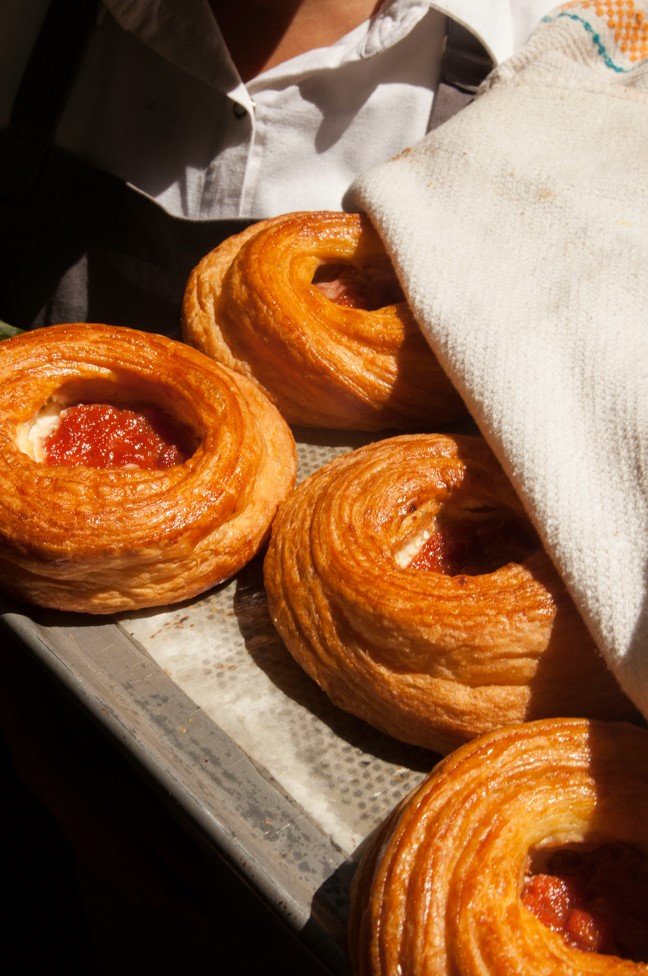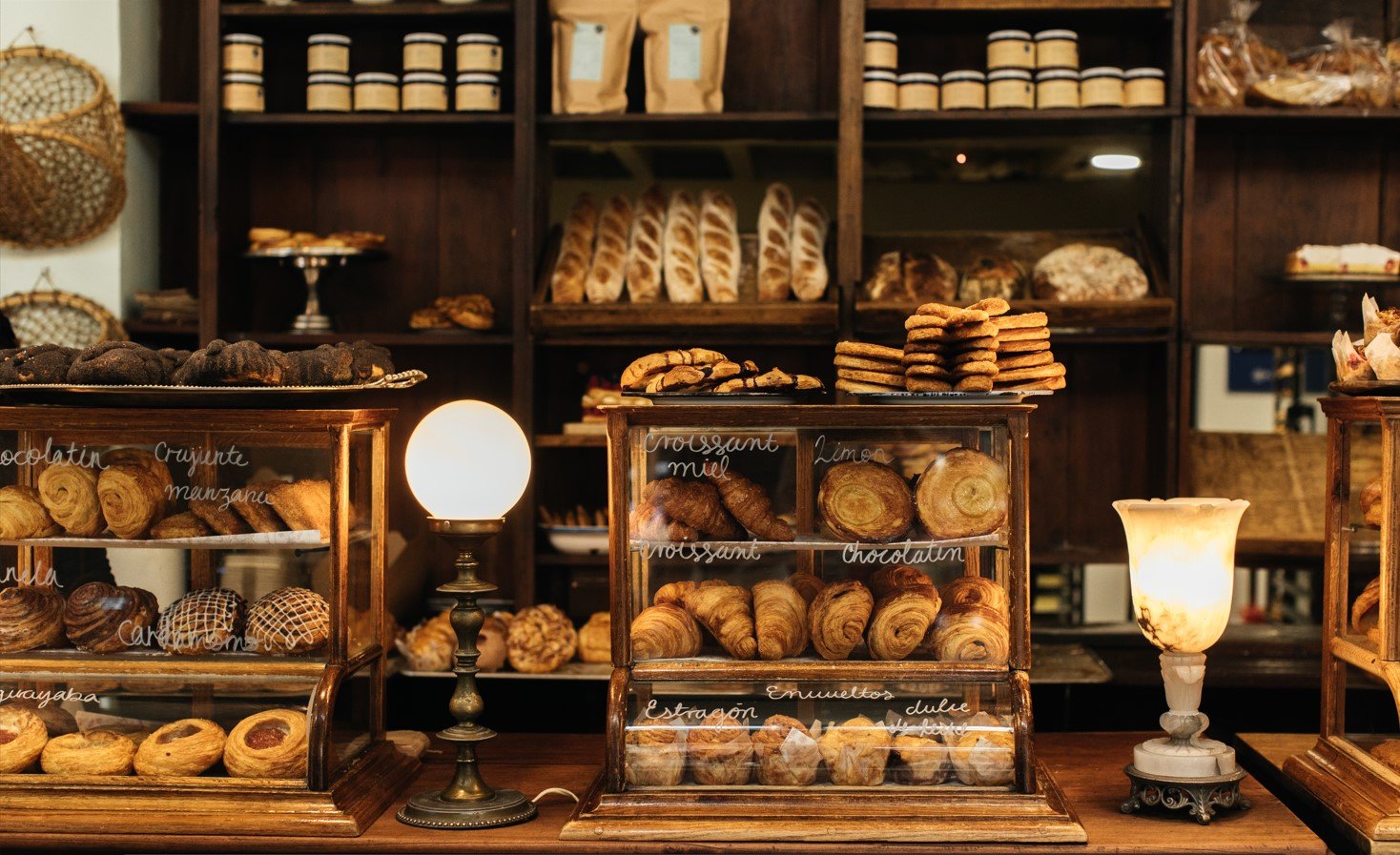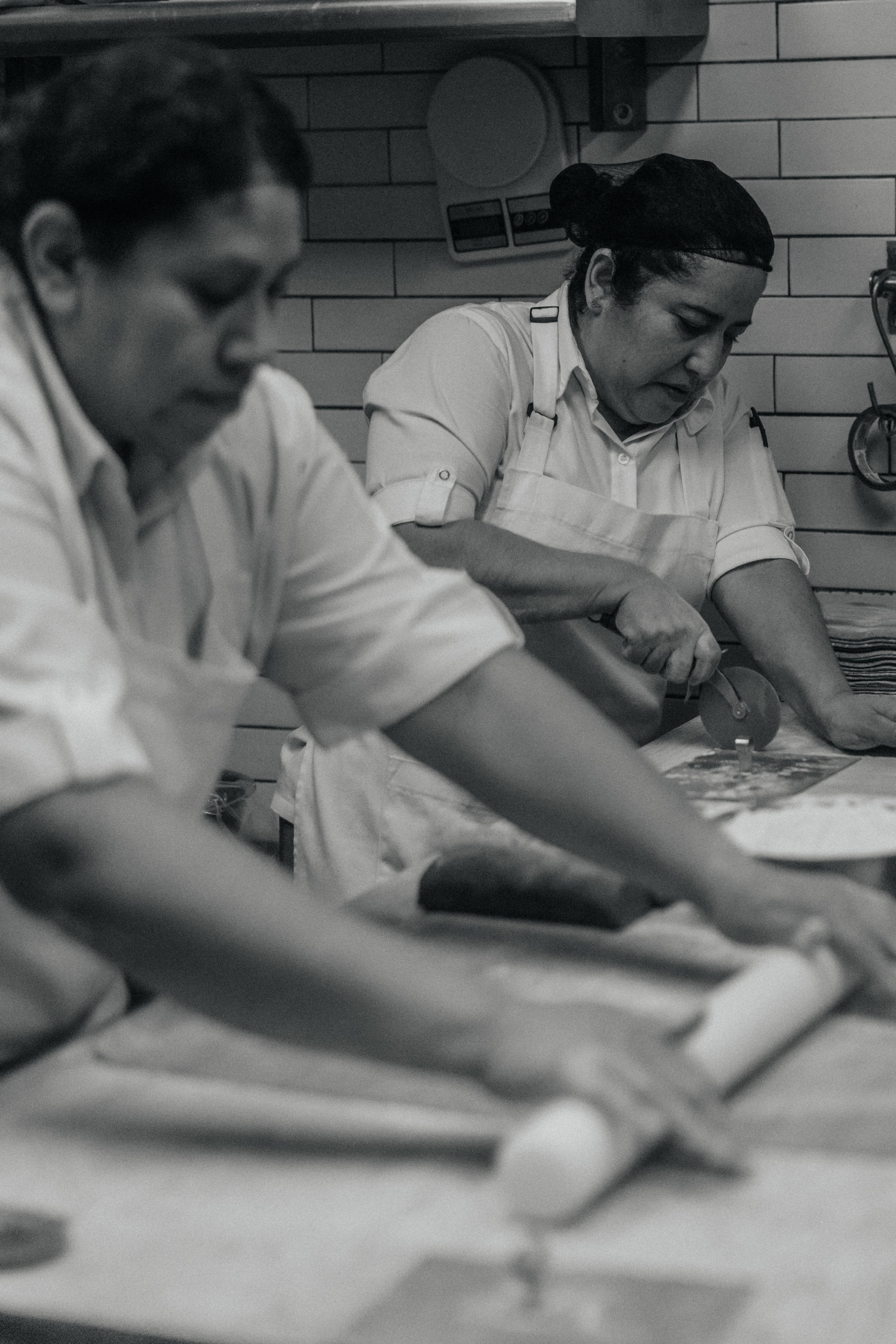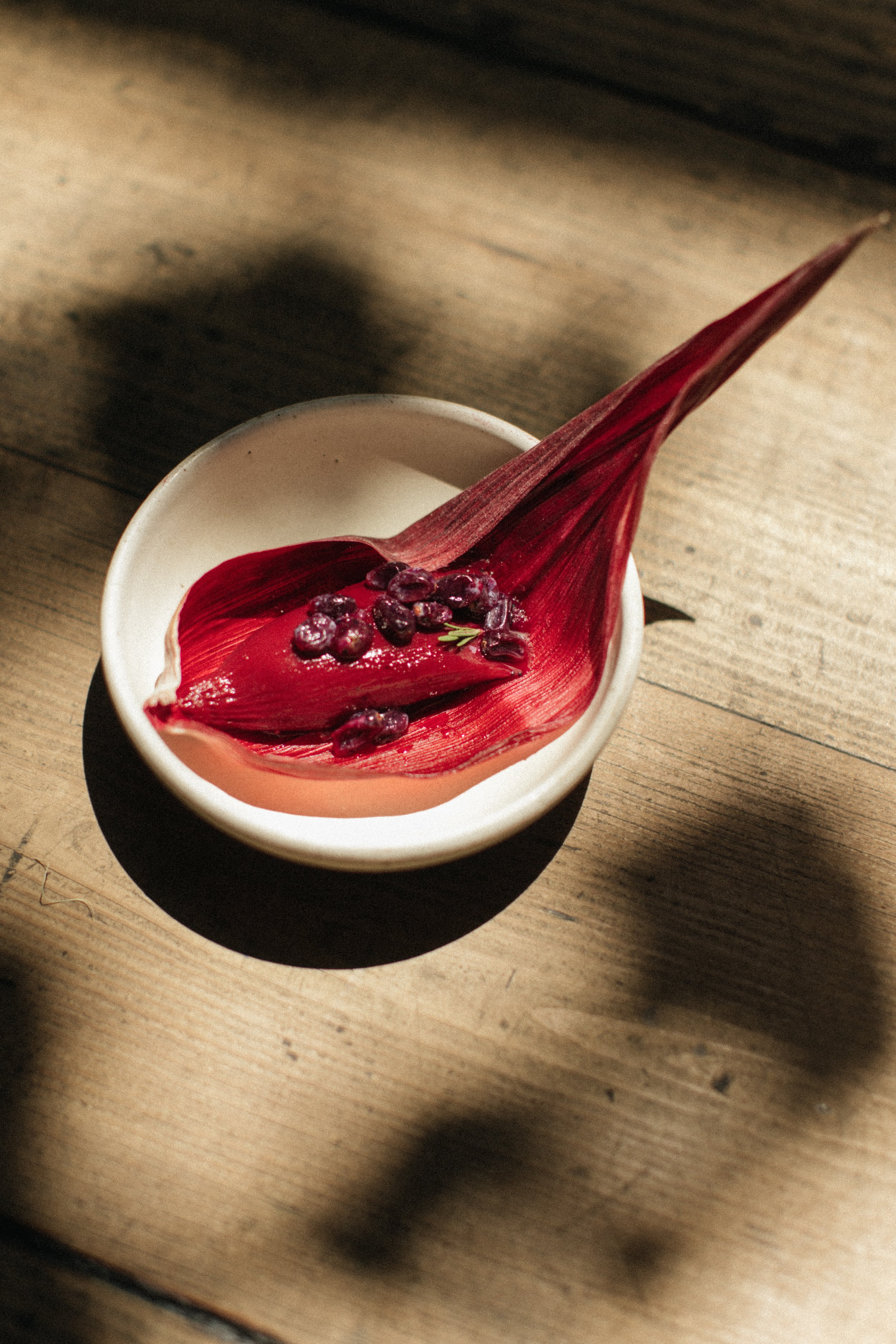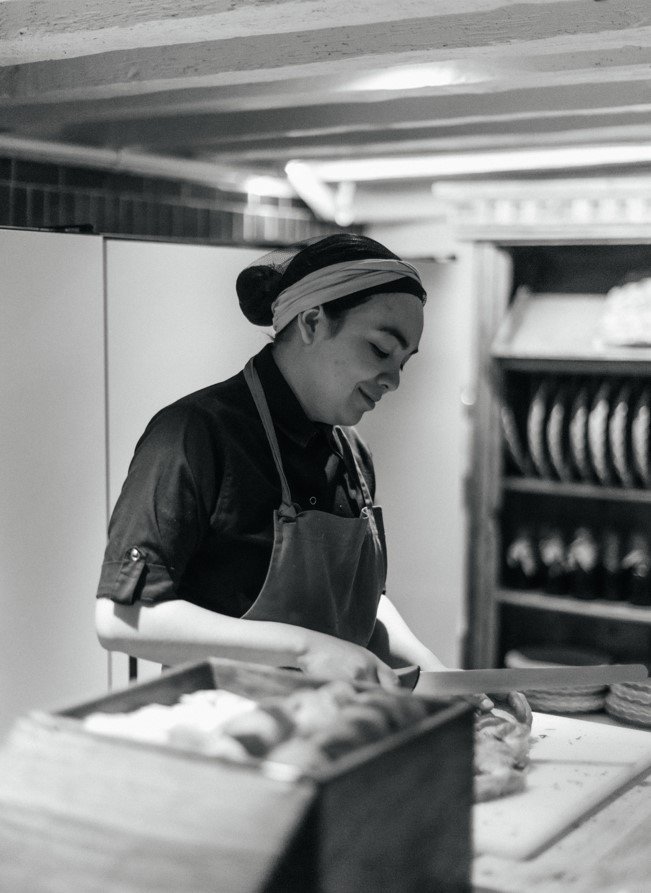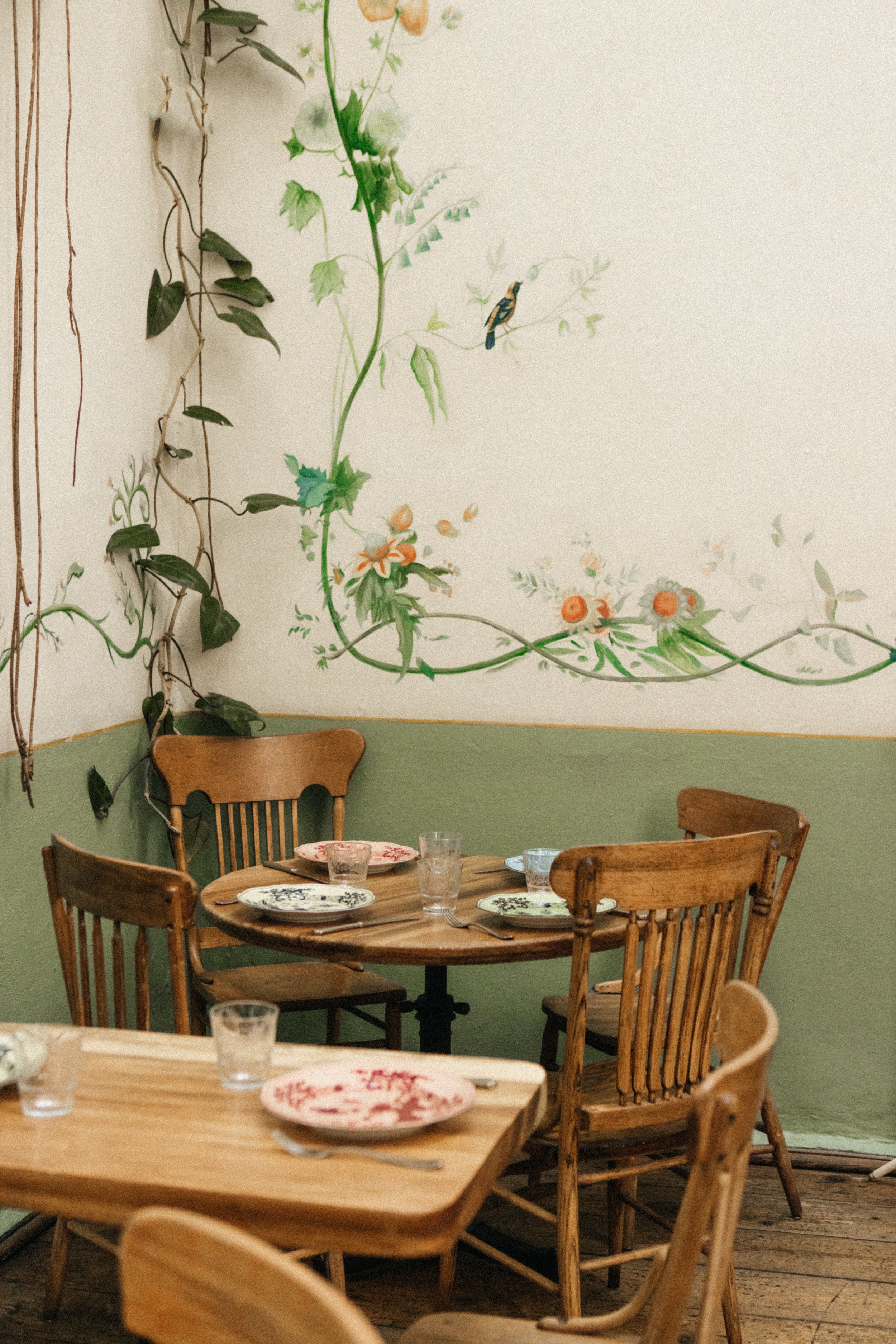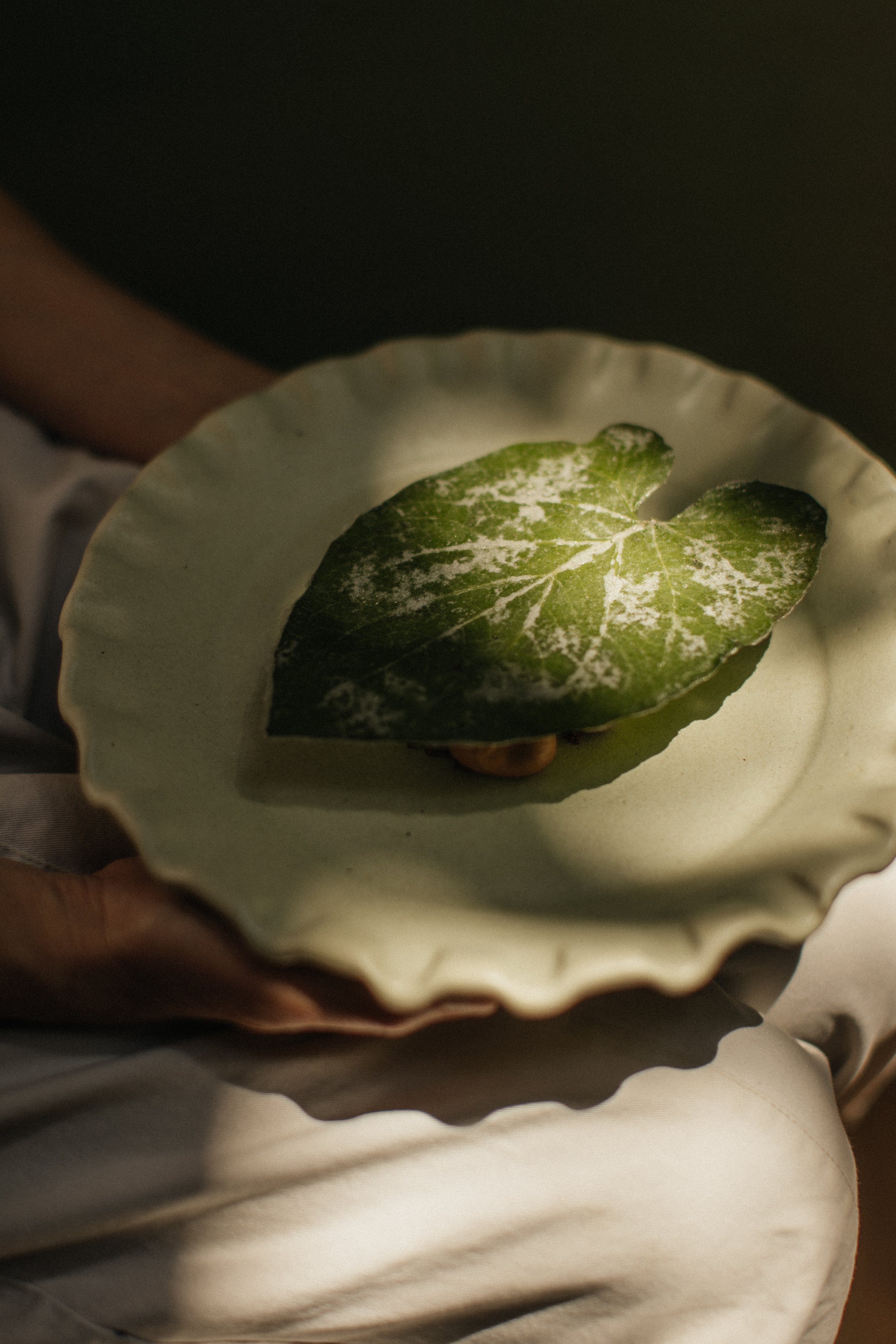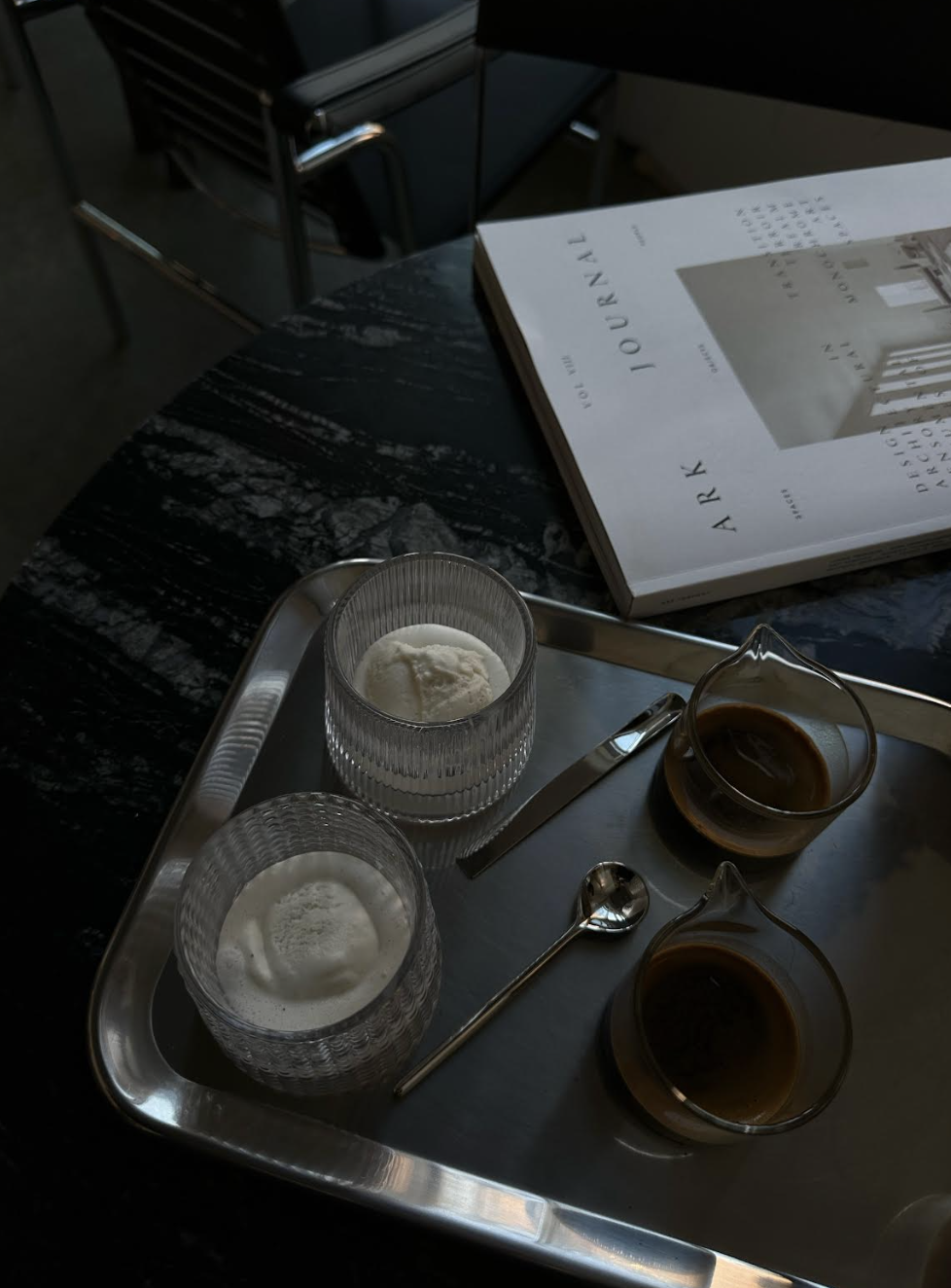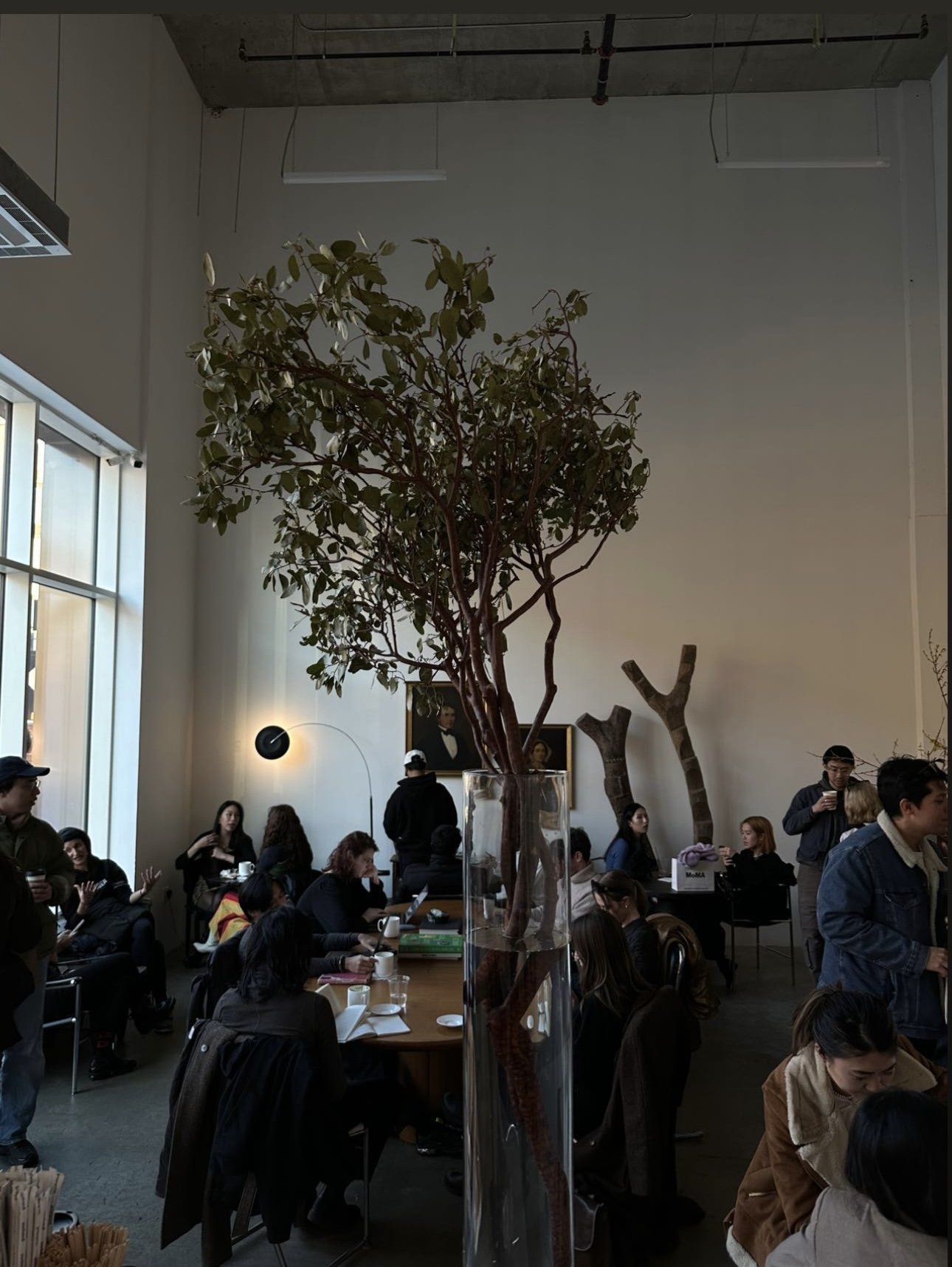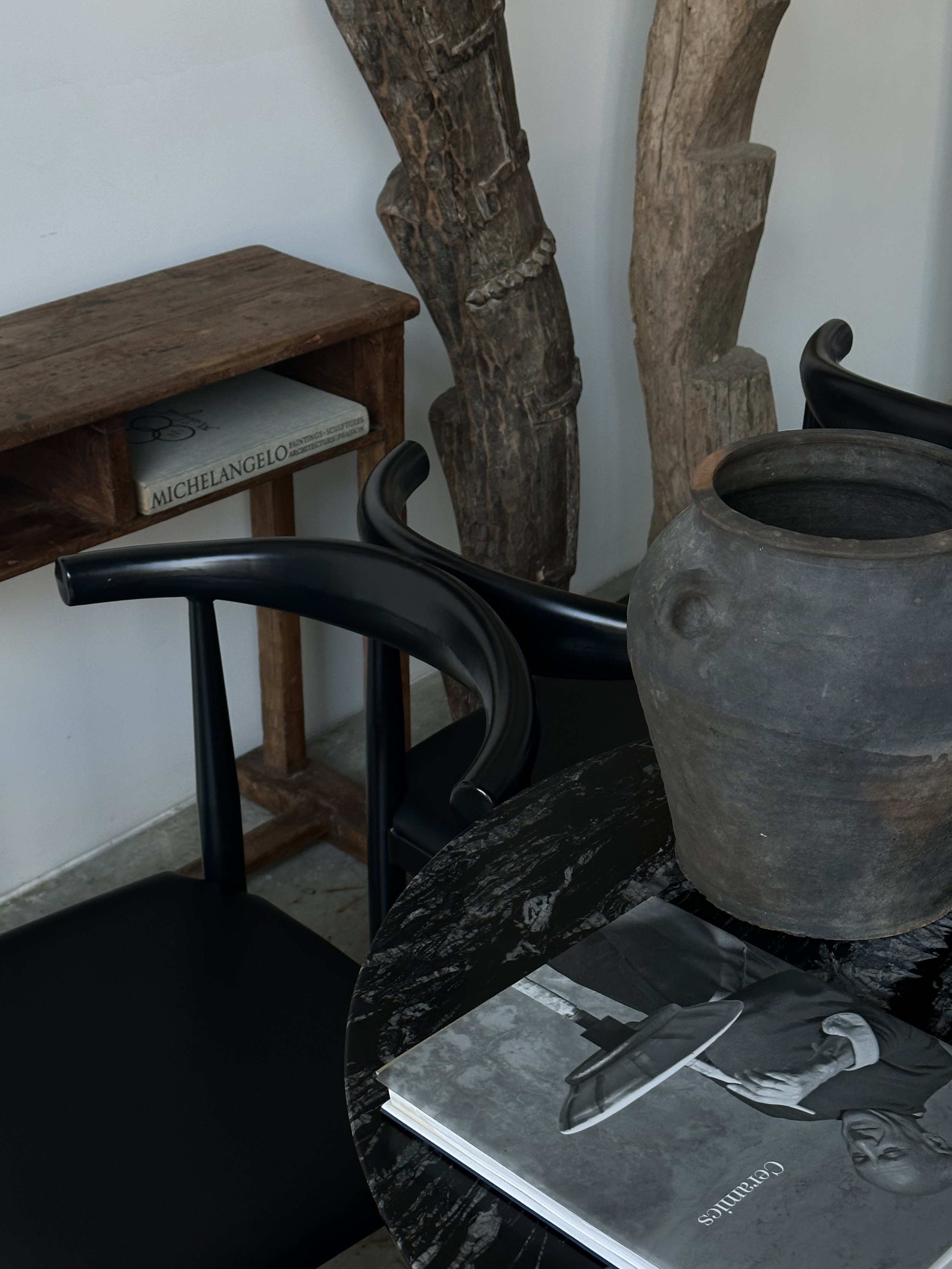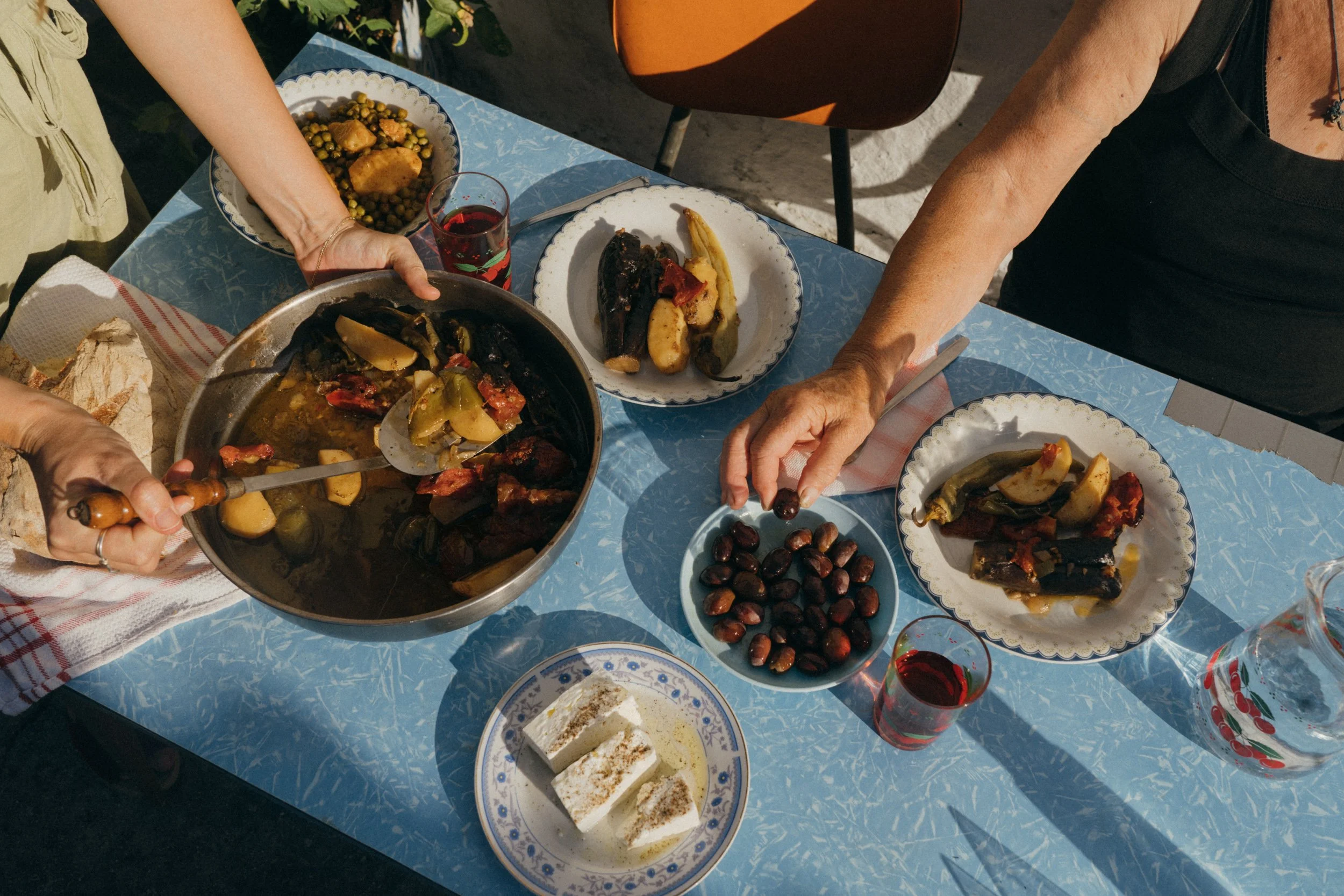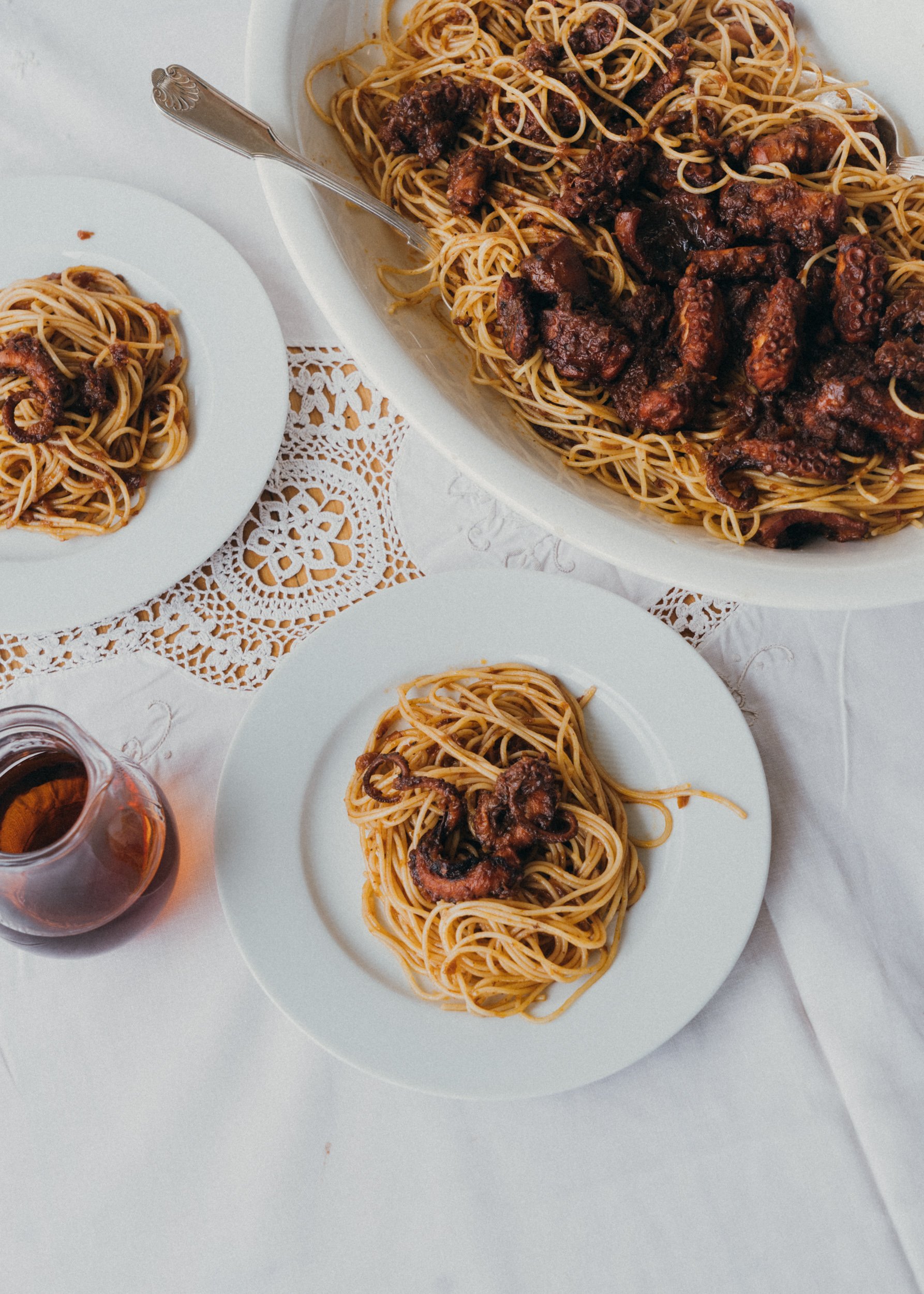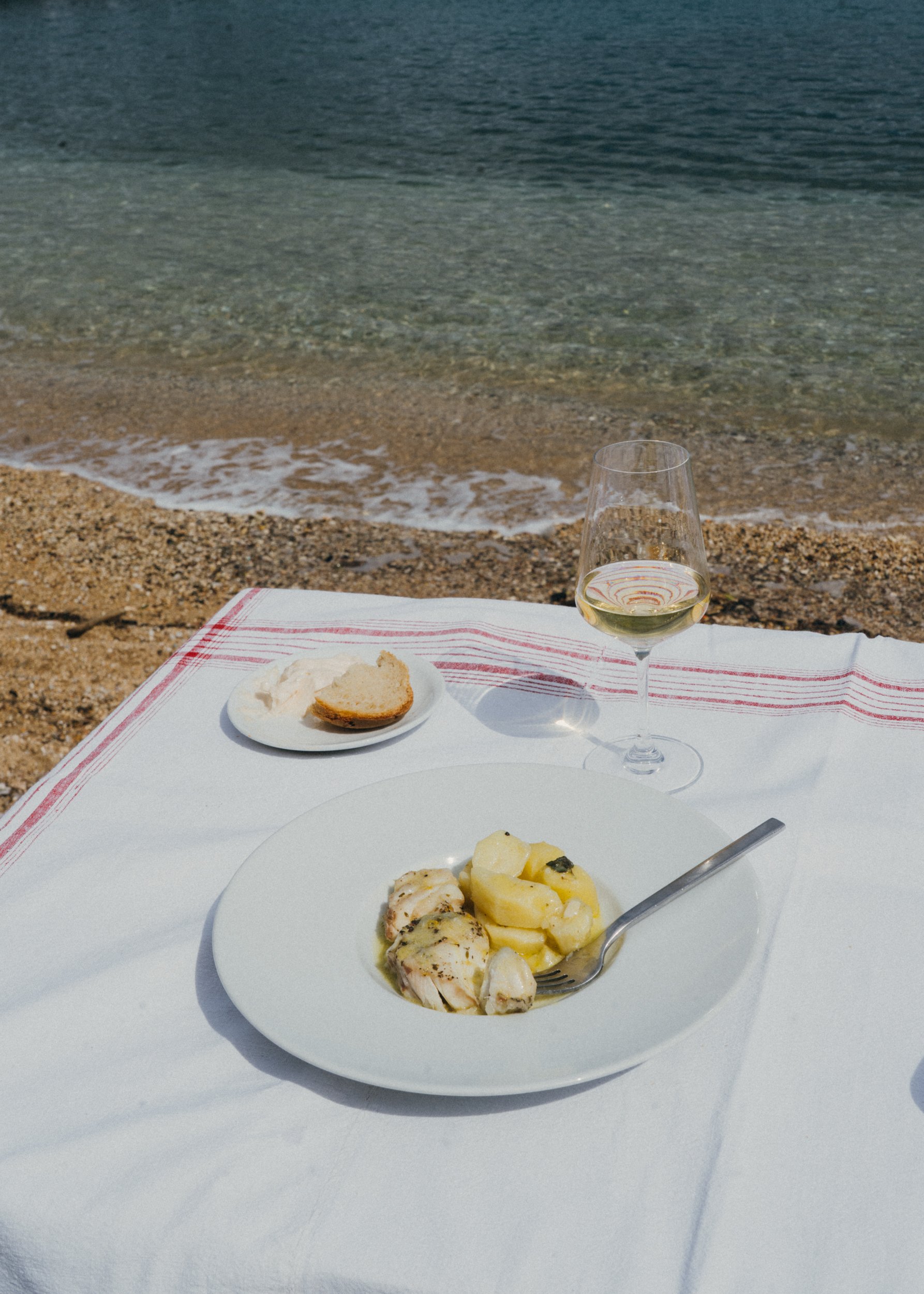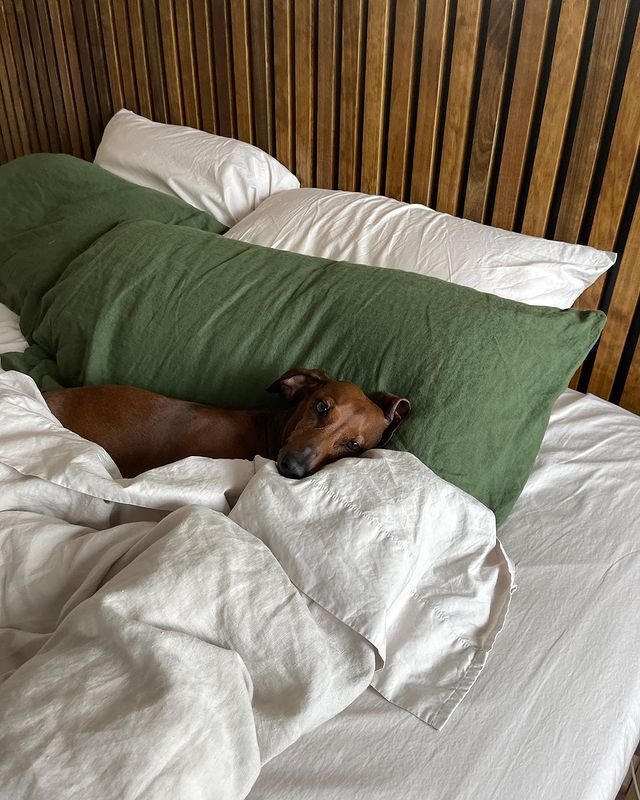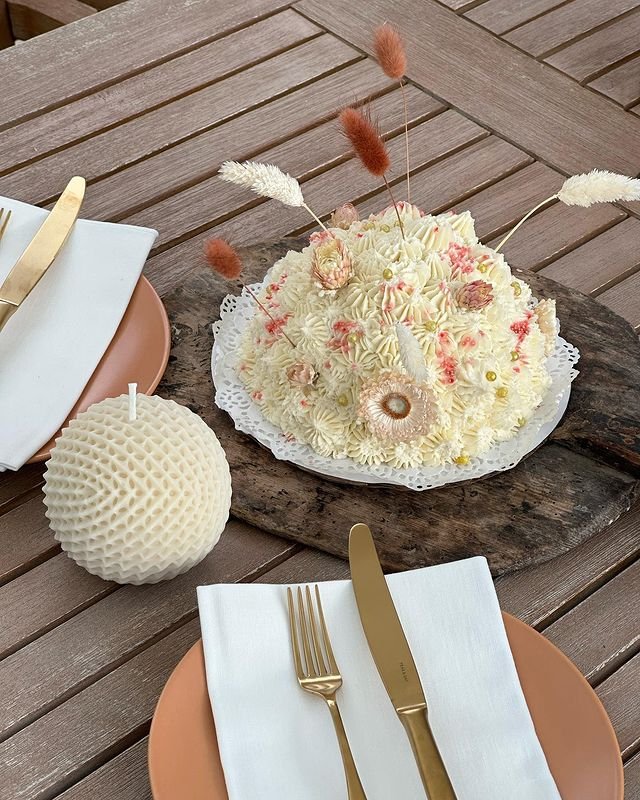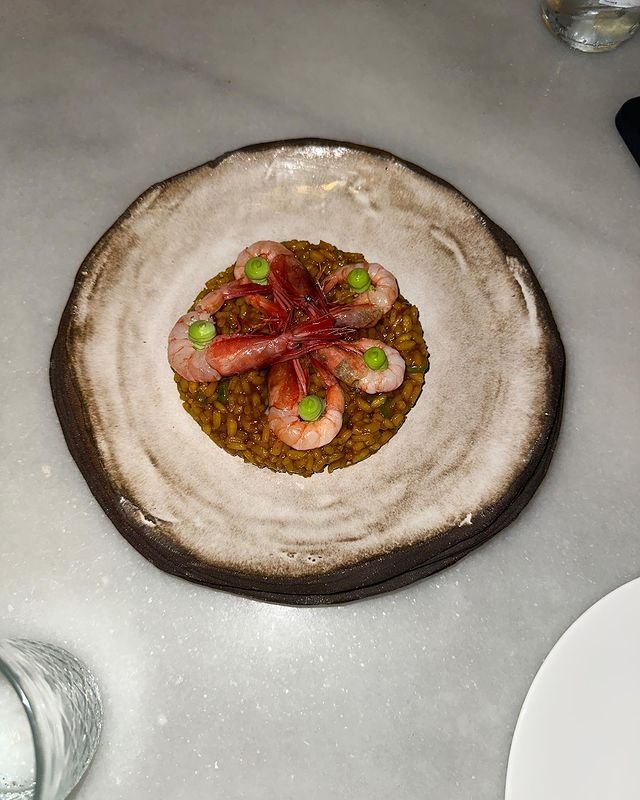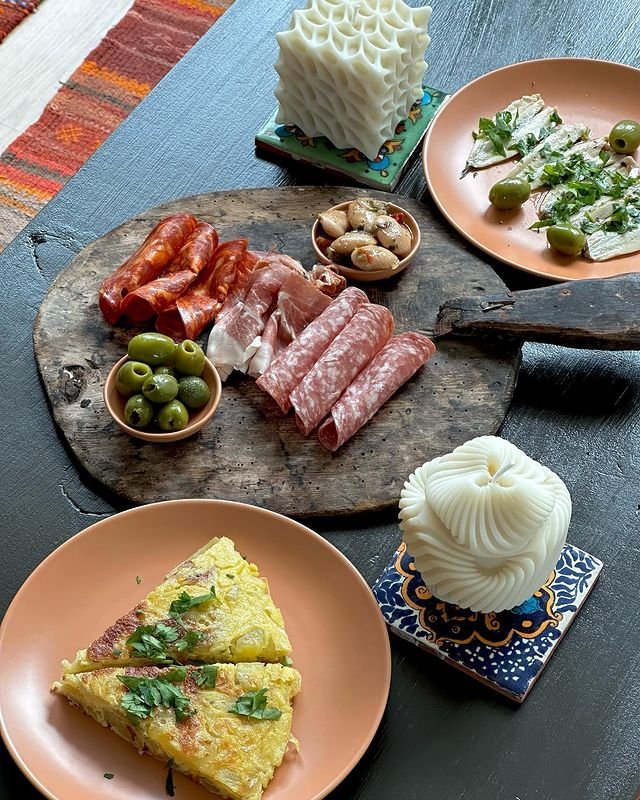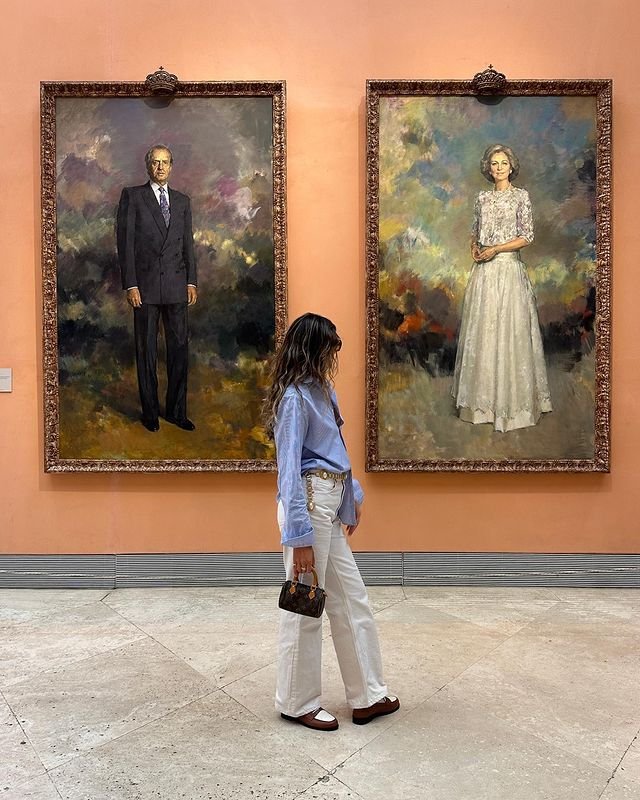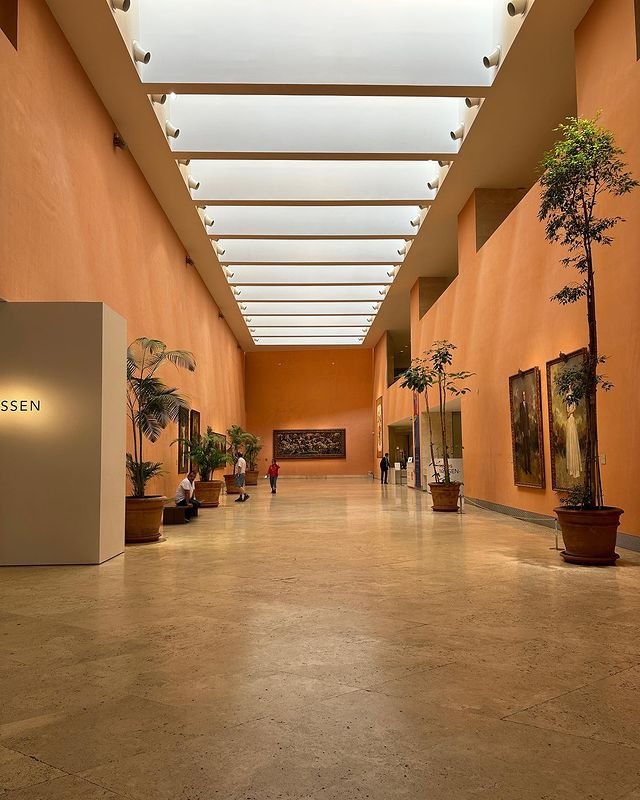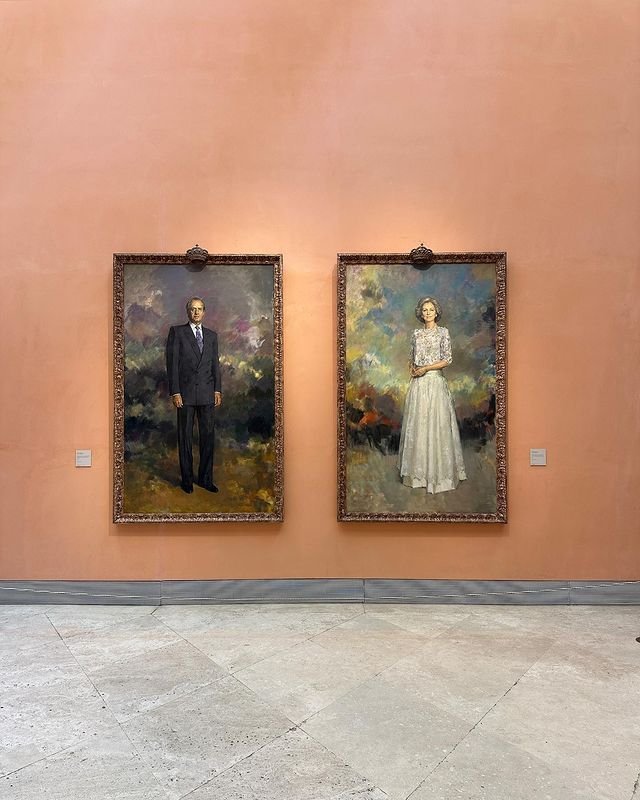Elena Reygada’s Kitchen
In the ever-evolving world of gastronomy, the culinary maestro is redefining the art of living.
Exploring the mind and life of the acclaimed best female chef in the world.
Photo: Maureen M. Evans.
Elena Reygadas is not merely a chef, she is an artist who orchestrates symphonies of flavors, textures, and aromas that transport plates to new realms of culinary bliss. With a remarkable ability to infuse her Mexican culture and knowledge with her creations with passion, innovation, and deep respect for tradition and ingredients, Elena has crafted a culinary repertory that has garnered widespread acclaim and reverence.
As the proprietor of renowned restaurants such as Rosetta, Panadería Rosetta, Lardo, Café Nin, and Bella Aurora, Elena has established herself as a visionary in the industry, where her commitment to sustainable sourcing, locally-sourced ingredients, pet-friendly spaces, and seasonal menus has become a hallmark of her gastronomic philosophy. Her holistic approach to dining extends beyond the plate, with a keen understanding that the art of living encompasses the entire sensory experience, captivating guests through thoughtful ambiance, warm hospitality, and meticulous attention to detail.
Photos: Ana Lorenzana and Maureen M. Evans.
Karen: How do you usually start your day?
Elena: I get up and have breakfast with my daughters. After they leave for school, I walk to the bakery. From there, I generally go to Rosetta.
KS: What are you most passionate about being a chef?
ER: Promote through my dishes a healthy and healthy diet, for our bodies and for planet Earth.
KS: What elements, outside the realm of cooking and food, inspire your work and define you as a person?
ER: Many things. I think that cooks should be curious and go beyond the gastronomic dynamics. I find inspiration in art, in literature, music, movies, and conversations with my loved ones.
KS: Tell us about the day you found out that you had been named the best chef in the world at The World's 50 Best Restaurants 2023 awards.
ER: It was a day of enormous emotion. For me, this recognition is for everyone in my team. And also for the Mexican women who cook daily for centuries ago.
Photos: Maureen M. Evans.
KS: Living in a city as cosmopolitan as Mexico City, where do you go to keep your mind and creativity stimulated?
ER: I love traveling through Mexico. I recently took a wonderful trip up the plateau Purépecha, in the state of Michoacán.
KS: Is there something you couldn't live without, both in the kitchen and in your life staff?
ER: My daughters.
KS: How does your lifestyle function and impact your professional life and vice versa?
ER: I don't know. I try to do everything with passion and find balances. The hardest thing is being a mother and a cook at the same time.
Photo: Maureen M. Evans.
KS: Do you have any weaknesses that you are working on to improve?
ER: I am always working to improve. In the kitchen is something you never know stops.
KS: In your Rosetta restaurant and bakery, what do you want to reflect about yourself to your diners?
ER: I want them to discover new flavors, new ingredients and show them that what we eat has a huge impact on our health and also on the environment.
KS: How can we see you reflected in your creations for Rosetta, Panadería Rosetta, Lardo, Café Nin, and Bella Aurora?
ER: In every detail, both in the food and in the decoration. Sometimes when people come to my house, they say that it's identical to Rosetta. I think they are right. All are part of an affective and sensory universe.
Photos: Courtesy.
KS: What are your ambitions and future projects?
ER: Continue working firmly on what I already have and continue to strengthen the initiatives and social programs that I have initiated, such as the Elena Reygadas scholarship to support young Mexican women studying cooking.
Jane Goodall Institute
Inspiring hope through action.
Inspiring hope through action.
Photo: Courtesy.
I heard about Jane Goodall for the first time in one of the most inspiring episodes of The Artipoppe Podcast, an interview series hosting game changers and inspirational thinkers in the field of health, wellness, social justice and politics.
In 1960, Jane traveled from England to what is now Tanzania and ventured into the little-now world of chimpanzees showing the world not only the urgent need to protect them from extinction but the importance of species conservation and the needs of local people and the environment. Considered the world's foremost expert on this species, the primatologist and anthropologist spent sixty years studying their social and family interactions. Today she travels the world, making people aware of the threats facing chimpanzees and environmental crises, and inspiring action on behalf of all living things and the planet we share.
We talked to Galitt Kenan, director at the Jane Goodall Institute in France about their ethos as a global non-profit wildlife and environment conservation organization and their mission to inspire action.
Georgina: Can you tell us about your role at the Jane Goodall Institute?
Galitt: I have had the chance to lead the Jane Goodall Institute France for five years now. It is a huge chance because she is an inspiring woman. Working with and for her encourages the whole team to excel. We are a small team of about ten people in France and about seven hundred in total. A very close-knit team, attentive to each other. Jane says we are “a little crazy, we laugh a lot, but terribly effective”… A nice compliment! We work both in France and in Africa. Some of us are focused on our role with young people to encourage them to act for a better world and support them in their actions (with our Roots & Shoots program). And others are focused on scientific research, communication, and meaningful partnerships with associations and companies that share our values.
We are proud of our actions on the ground. Whether it is to help wildlife (mainly chimpanzees) in sanctuaries in Africa or scientific research. But also our actions to restore forests for soil regeneration and agroecology. And our impact on local populations. We act locally, in twelve African countries by offering aid for access to water, education, health, women empowerment, and economic and social development. A comprehensive, holistic approach because everything is linked in life: people, other animals, and our shared environment. So we must also act globally to have strong impacts in the long term.
Georgina: How do you inspire hope through action in this community?
Galitt: To protect you must love and to love you have to know. It all starts with knowing. To know what the situation is and that we are in a crisis of life. We are talking about the sixth extinction of species (one million species have already disappeared). But that window of time still exists to act. It is short and that’s why we must act now. Hope is not synonymous with apathy. On the contrary, true hope requires action and commitment. This is what makes it possible to fight against apathy or eco-anxiety. We live in such a complicated period (geopolitically and climatically) because hope is contagious and actions bring results that inspire others! It's a virtuous circle! Each of us must therefore act now. We can think individually before each purchase if it’s ethical (not tested on animals, produced without involving child labor, etc.), but it’s the big companies and the public authorities who can and must act. We cannot continue to act as if we live in a world of infinite resources.
Photo: Courtesy.
Georgina: Jane Goodall's early research on chimpanzees helped us better understand our species. What can you tell us about the art of living with this species?
Galitt: We share 98.6% of our DNA with chimpanzees who are thus our closest cousins. In the sixties, Jane made major scientific and etiological advances, but beyond that, she pioneered an avant-garde approach to animal behavior. Her discoveries through her fieldwork showed that many behaviors —once considered uniquely human— may have been inherited from common ancestors we shared with chimpanzees millions of years ago.
”Chimpanzees show compassion. They kiss and comfort each other when they are in mourning. The bonds between mothers and their children are very strong, as well as between brothers and sisters and they can also go to war, this is not the prerogative of humans! The more we learn about these related beings, the more we understand what it means to be human.”
It is by observing them that we have been able to make significant advances in medicine, for example. It is also by observing them that we can have, on the ground, a sentinel role for any viruses that could appear. Their art of living has taught us over time and continues to teach us so many things, about them and about us.
Georgina: How are the lives of people, animals and the environment linked?
Galitt: Everything is linked in life. People, animals and our shared environment. We form a unique ecosystem and like in any ecosystem, for it to be viable there must be intense and quality relationships in their relationships. Respectful, harmonious and balanced relationships. Each species has its role to play. The living world is like a tapestry, in which each stitch is held in place by what surrounds it. A species that disappears is a hole in this tapestry of life and each new hole weakens the ecosystem. There are more and more places in the world where the tapestry is so damaged that the ecosystem is on the verge of collapse. This is why there is an urgent need to repair. This is what we are doing in France and in Africa. Local populations are at the heart of our projects as they are the ones who determine where, when and how to act. They decide how best to work for them while preserving their natural heritage (animal and floral). They know which endemic species to use, how to ensure the long-term success of the project and who decides on priority objectives to stop deforestation and take action. It would be too easy (and so arrogant) to think that we arrive with ready-made solutions to apply. This is why we work with more than 95% of local collaborators.
Georgina: One of Dr. Jane Goodall's many accomplishments is reminding modern Western science that we are part of nature, not separate from it. How can we celebrate and protect the connection we have with other species and nature in our daily lives?
Galitt: Oh yes, Jane is a pionnier is so many ways, scientifically, in ethology, in so many domains…. You are touching on such an important point! Human life is inextricably linked to the natural world. Our food, the air we breathe, the clothes we wear… it all depends on it! However, to meet our needs, ecosystems must be healthy. We are part of nature and the animal kingdom. It is important to remember this because we tend to forget it! This link can be intellectualized, but sometimes we just need to live it, to feel it. This often begins with learning and relearning to be silent in order to listen better. To observe better and to feel. It is also an opportunity to leave our frenetic pace, to slow down. It's taking the time to educate ourselves. To better know the plant and animal species that surround us. Look at the references in books, songs, and films: our vocabulary for talking about plants and animal species has become so impoverished. It follows our level of knowledge and it's up to us to change all that!
Afterward, of course, there are many other concrete ways to celebrate and protect this connection. Having a diet with little or no meat, checking that any animals have been tested to create the objects we use, adopting an animal from a shelter rather than buying one, fighting against industrial farms… There are so many ways to act!
Georgina: Is the art of living linked to the art of giving?
Galitt: How to define the art of living? Not an easy question! I think it's a way of being, of thinking, of acting… A way of being with oneself and with others. In any case, it can only be a question of exchange, respect, and harmony. So yes, it seems to me that the art of living is linked to the art of giving. Not only materially, of course. Giving hope, as Jane and the Jane Goodall Institute is doing, is just as important.
Georgina: Any current or upcoming initiatives at the institute that you feel excited about?
Galitt: There are so many projects I would like to talk about! How we collect orphaned or injured chimpanzees in our sanctuaries, how we act to change laws and regulations, how the young people in our Roots & Shoots program act day after day for a better world… They are all so inspiring! The young researchers who won our prize this year, and the six finalists of our eloquence contest for Sustainable Peace are so impressive to name but a few! But there are two projects that I would like to share with you: one is in Tanzania and the other is in Burundi.
As you know, forests play a major role on earth, not only hosting 80% of the world's biodiversity but also performing a key function in storing CO2. Their deterioration and destruction are therefore a key issue for all. Africa loses more than 10 million acres of forest each year, double the global rate of deforestation. The degradation and fragmentation or even the disappearance of these forests are vital threats for many endangered species, including chimpanzees. African great apes could lose 90% of their habitat by 2050.
“Last year, thanks to the young people in our Roots & Shoots program, and the support of the Maisons du Monde Foundation, we succeeded in securing and protecting 410 hectares of plots of land, planting 1 million trees, within remaining fragmented landscapes in the coastal forests of Tanzania. By involving and raising awareness of more than 4,000 young people (especially women), we act for people, other animals, and our shared environment.”
The main goal is to support local communities by enabling the forest to serve as a viable source of alternative income. We aim to benefit the chimpanzees and the diverse wildlife species by limiting the fragmentation of their habitats. Our efforts involve the restoration of the soil through reforestation in the most severely degraded areas with help from our partners, DocuSign and the Akuo Foundation. These projects exemplify the type of initiatives we have been actively undertaking in the African continent for over 45 years. And all of this thank’s to the amazing teams on the ground that do colossal work, with passion, determination and impact. They are my heroes….with Jane of course!
Photo: Courtesy.
Brooklyn’s New Rhythm
A warm conversation with Ivana, Rhythm Zero’s co-founder, on all the things we love: art, coffee and community building.
A warm conversation with Ivana, Rhythm Zero’s co-founder, on all the things we love: art, coffee and community building.
A coffee shop opened last year in the heart of Greenpoint. While walking around the neighborhood I was drawn to it by its beautiful interiors and the carefully curated art throughout. Soon did I realize that Rhythm Zero is more than another trendy cafe in the area, it is a new art hub, hosted by two passionate Serbians who are killing it with their inviting and inclusive space.
Photos Courtesy of Rhythm Zero
On Thursday June 8th we had planned to stop by to photograph the shop and its founders, Ivana and Alex, but with the unexpected Canadian wildfires that blanketed New York the previous evening, we decided to cancel and instead, we chatted over a zoom call where I got to lean the beautiful mission of the project and bonded with Ivana over entrepreneurship, our love for art and even our visa struggles in the US.
Alex and Ivana met in Serbia, Alex won the green card lottery, so Ivana applied and she won it too (it was definitely meant to be) so they moved to New York. Ivana’s mom owned a gallery in Serbia, so she’s always been surrounded by art. She studied Economics, but the thought of building a community around coffee and art has always been in her mind, especially because Alex is a big coffee aficionado and because the coffee culture in Serbia is very prominent. After a couple of years in the city, they decided to embark on this new project together.
Finding the right space in New York was as challenging as you can imagine, but after three months of an intense search, they finally found the perfect spot on Kent Street with white walls, high ceilings, and beautiful natural light. Alex runs the coffee and hospitality operations and Ivana curates the space with her exquisite eye for art and design. She also directs brand partnerships and activations.
“We are still learning day by day, with every single meeting, with every single conversation. I come from the finance corporate world, so dealing with art is something truly different, and each project is very unique.”
Alex and Ivana are very community-conscious, from the matcha they serve to the art they display, they source everything locally and they make sure they provide exposure opportunities to emerging artists and creatives. They recently partnered with Roya Shariat to raise funds for Cook For Iran with some sweet treats in the space.
It was a two-man show for the first six months, Ivana quit her corporate job and embraced this new lifestyle with lots of passion and energy. Now they are at a point where they are able to have help, allowing them to focus on other stuff, like art exhibitions and expansion. The growth has been significant, they are now being approached by huge brands and more established artists for collaborations and activations.
Ivana credits a great part of the success of the shop to the warmth of its hosts. Serbians are naturally warm people, and I can relate when she mentioned that it was a shock to see how in New York people don’t talk to each other. You can be in an elevator with your neighbor and not a word will be spoken. However, Greenpoint is really something special; the up-and-coming neighborhood is full of young creatives that are all about community and support. Alex and Ivana embrace the full concept of what we refer to “The Art Of Living” by bringing their true passions under one roof: their love for hosting, art, and coffee while providing a space for the local community to thrive in a different rhythm.
Although the name comes from Marina Abramovic’s acclaimed six-hour performative art show, there have been many different interpretations of what “Rhythm Zero” means. Some say that it is their starting point of the day, the stop before the first stop in their busy schedules. Some others attribute the name to the warm and calm feeling that transpires in the shop, kind of like being inside an inspiring oasis in the middle of the hectic New York rhythm.
The duo is currently working on a big brand collaboration that we can’t wait to learn about, new art shows are in the pipeline and new cities are on the horizon.
Matriarch Eats: A Food Talk with Anastasia Miari
Collecting stories and time-perfected recipes from grandmothers in Greece and around the globe.
Collecting stories and time-perfected recipes from grandmothers in Greece and around the globe.
Photo: Courtesy.
“Yiayia” means grandmother in Greek, a culture where these represent not only figures of love and support but symbols of strength, mentorship, and heritage. They provide care, wisdom, guidance, and last (but not least) comfort food.
I bumped into Anastasia Miari’s books for the first time while doing deep research on Greek dishes for a dinner that I never hosted. Yet, discovering “Yiayia: Time-perfected Recipes from Greece’s Grandmothers” felt like finding the ocean when I was looking for a pond.
Inspired by her Yiayia, Anastasia ventured on a journey collecting the recipes and memories from grandmothers throughout Greece who welcomed her and Marco Argüello (the lens behind these stories) into their homes to show them first-hand how their “time-perfected dishes” were made.
Along with this publication, Matriarch Eats was born, a project sharing the stories that have seasoned grandmothers’ recipes all over the globe and where she has been cooking with and interviewing them for six years, holding a Guild of Food Writer’s Award for ‘inspired storytelling and great journalistic integrity’.
After the birth of her baby girl Callipso, we managed to successfully contact Miari to talk about growing up in Corfu, Greek grandmothers, culinary retreats, and food, lots of food!
Photo: Courtesy.
Georgina: Located in the Ionian Sea, you were raised and spent every summer of your life in Corfu. How was it growing up on this Greek island?
Anastasia: Growing up on the island was amazing because I had a lot of freedom. I come from a small village in the south where there was not a lot of tourism, so I had the freedom to run around from an early age. I didn’t have to be accompanied by an adult. My parents were working during the summer season so I spent a lot of time cooking with my Yiayia, planting tomatoes, taking care of the land, and observing the cycle of the seasons.
Georgina: How would you describe the “art of living” of the contemporary Greek society?
Anastasia: In comparison to other places I’ve lived in like London, in Greece people know how to live in a more relaxed and measured way. We go out and we take our time. We take coffee with our friends and not everything is dumped into a fantastic schedule. Everyone knows how to enjoy life and I appreciate this very much. I think that contemporary Greek society still follows the same lifestyle as my Yiayia.
Georgina: And talking about her, “Yiayia: Time-perfected Recipes from Greece’s Grandmothers”, showcases sharing and feasting dishes from the kitchens of grandmothers across Greece. Tell me more about the role that Yiayias represent in Greek culture.
Anastasia: Grandmothers from a Greek family might stay at home taking care of the children while men go out to work, but that also means that they have a commanding force over the family. They decide what everyone eats and when everyone sits to eat. I think this is a very defining part of every Greek person’s routine. Grandmothers often looked after the money while their husbands were away, so they had a very good head for what was needed at home for the family. I think that grandmothers are very strong and not so cute and cuddly.
Georgina: After the boom of this first Greek Yiayia’s anthology, you founded “Matriarch Eats”, a project collecting and sharing the stories that have seasoned grandmothers’ recipes all over the globe. How was the idea of this project born?
Anastasia: It was born by me being inspired by my Yiayia and her cooking. She cooks the most amazing dishes! They are very simple, with very good ingredients, and she uses basic equipment like blonde knives and not-so-sharp knives. She doesn’t have a chopping board either, she chops directly into a bowl with this amazing ability like a lot of Greek Yiayias do. She is one of the best cooks that I know and I wanted to recreate her dishes so that once that she is no longer around, I can still have the flavor of being in her kitchen to honor and remember her.
Georgina: How can we see Yiayia reflected in you?
Anastasia: Unfortunately for my man and the people around me, Yiayia has had a huge influence on my personality. Lots of people say that I am exactly like her, that I am very opinionated, quite strong as a person, and a little bit scary in that force. Otherwise, in terms of how I live, I think that she inspires me to eat seasonally. I try my best to cook as much as I can and to take my time while preparing every meal even if it's just for me. Feeding myself is an important part of my day. Even though my Yiayia lives on her own since my papou died, she still focuses on cooking for her every day. I find inspiring that she always has a focus and that she never really stops. Her day revolves around food, nourishing herself and the people around her. I inherited that need of nourishing people around me.
Georgina: The culinary retreats that you’ve been lately organizing sound like my type of retreat. No yoga, no mindfulness. Just eating, drinking, and discovering hidden gems. Can you tell us more about them?
Anastasia: Yes! What I like about my retreat is that it focuses on wellness but in an epicurean sense. It’s meant for people that like to have fun and not restrict themselves, like myself. I often hear about all these yoga retreats and I think that I would love to go to all these nice places and do yoga every day but I don’t want to restrict my eating and I don’t want to eat salads every day. I want to enjoy the food of the region! So the idea behind this was showing people visiting my island, food that they would not find if they were coming as a tourist. Corfu is a very touristed island. The whole coastline has been very damaged by tourism in the past thirty years and for me, it’s important to show people the island that I know and the one that my Yiayia grew up in. You can have a home-cooked meal on the sideway that doesn’t cost a big amount of money. You can meet local producers respecting old traditions, culinary heritage, and also my Yiayia. You will learn how to make Greek coffee from a person that knows how to make the best Greek coffee. I want everyone to have a fun time, get drunk, dance, enjoy the experience, go on hikes, swim on secret beaches, and discover secret places that I wouldn’t just take anyone to. The places I take my friends to.
Photo: Courtesy.
Georgina: You recently had a beautiful baby, congratulations! How would you like to inculcate in her this way of living, enjoying and perceiving life?
Anastasia: Yes, I recently became a mother to a baby girl named Callipso and there are a lot of things that I would like to share with her. It was very special that I wrote my book “Yiayia” while I was pregnant with her, traveling around Greece and meeting Yiayia while learning lessons of wisdom from them. More than everything, I wanted to give her a lot of food. She started eating solids and from the very beginning, I was adding spices to her food. She’s been playing with her food, touching it, and picking up sweet potatoes and avocados. Today she had a curry with so many different spices in it. So I am very excited to share with her a lot of the passion of squeezing as much as she can of life, traveling, and finding her power as a woman on this planet.
Georgina: Is there any exciting/upcoming project that you would like to share with us?
Anastasia: I am in the editing stage of my new novel and working in a series of supper clubs where I’m hosting dinners in interesting locations in Athens for people to come and enjoy
Photo: Courtesy.
A Holistic Living
A conversation with Camila Mae Navas about embracing a sustainable lifestyle while pursuing her love for art and holistic living.
Camila Mae Navas on how to redefine aesthetics and design.
Camila Mae Navas is a talented multidisciplinary artist and the visionary behind Nlumec, a brand creating sculptural, modern candles that transform as they burn. Camila’s fascination with the interplay of light and space began in her youth, fueling her passion for designing illuminating experiences within interior environments. As a San Francisco native, Camila has immersed herself in the worlds of art, film, production, and museum curation. Currently splitting her time between New York City and Miami, she embraces a sustainable lifestyle while pursuing her love for art and holistic living.
Camila’s expertise and artistic sensibilities have garnered attention from international audiences, leading her to consult on interior design and art projects. Her formative experiences visiting museums with her family and exploring diverse architectural styles have shaped her artistic journey. For her, being a businesswoman means uplifting and supporting other women on their journeys to success. She believes in the strength of expression through art and uses her company and creativity as tools to empower herself and others.
Photo: Courtesy of @camimaecool.
Karen: When scrolling through your Instagram account, I realized that you keep an important connection with nature, the earth, and the care of the self. What influenced you to choose this kind of lifestyle?
Camila: Growing up in California, I have always had a strong connection to nature and the earth. I grew up hiking and camping and connecting with the elements. I am an Earth baby born on Earth Day and I am also a Taurus. For me, everything starts with a connection to nature and feeling grounded. I feel my best when I have the ability to escape to the ocean or take my dog to an empty open space where we can just be free. I am fascinated by all that mother earth has to offer and I want to make sure she is treated well by me and those around me. There is also beauty in the rawness of earthy elements in their truest form like raw wood, stone, and handmade raw materials like linen. I feel the same way about the body and care of the self, I don't do much. I am not fussy when it comes to nails, hair, or makeup. I love to do self-care but aim to use natural products and maintain effortless upkeep. The closer to its truest form and least processed, the better for me.
Karen: Where do you take your inspiration from to develop yourself between interior design, fashion, art, and entrepreneurship?
Camila: I am driven by the beauty all around me whether it be art, spaces, or people. Relationship with beauty can mean different things to you and me and I think the beauty lies there in the unknown. What sparks excitement for me is being able to cultivate beauty in everyday life like my space and fashion but also with relationships that I build with people or even a stranger who ends up striking up a beautiful and unexpected conversation. As to entrepreneurship, I grew up knowing I didn’t only want to work one job, I wanted the flexibility to explore all facets of my being and the talents or hobbies that drive me. I started my architectural candle company Nlumec just after graduating college during the peak pandemic of 2020. I was bored in the house and longing for creativity after just finishing schooling in art history, painting, and sculpting. I created a natural product and combined that with my love for art, design, and ambiance. That boredom led me to create Nlumec and everything flowed so effortlessly that people enjoyed what I was creating and I love sharing that energy with people I love gift giving.
Photos: Courtesy of @camimaecool.
Karen: What common thread exists between all these projects?
Camila: I would say the common thread is beauty and independence! I am driven by all the beautiful things in this world and being free to do what brings me joy.
Karen: Your company Nlumec brings all your expertise into one brand. Can you guide us through the process that takes place in your studio?
Camila: I took a sculpting class with a professor that made me fall in love with the world of sculpture and ways of expressing emotion through art. I graduated during the height of the pandemic and I did not get to walk in a graduation ceremony. Bored and filled with creativity after finishing my studies at Hunter College, I wanted to create a business and I was really into casting and molding. I found the possibilities endless. I won't share too much of the magic but I came up with a proprietary process to get these shapes out of beeswax that are almost futuristic while still being organic like the body. There is a familiarity with the shapes and the material that I connected to right away.
Photos: Courtesy of the artist.
Karen: What meaning does interior design have in your life?
Camila: Interior design to me means comfort and familiarity. It is a way of expression just like when you dress yourself in the morning. You are designing your look for the day and it becomes part of your persona. The interior design of a space is that persona; it is another way of reflecting who you are. I am an artist and expression means everything to me. I need to be around people that I feel I can be myself and express myself fully- the same goes for my space. This is true for any space, a restaurant, or a hotel - it is a reflection of the experience they have designed for you to have. The ambiance is everything.
Karen: Being a multidisciplinary artist in so many different fields must be something that takes a lot of hard work and nights without sleep. How do you find a balance between them?
Camila: What is balance anyways? I have a very strong connection to my sense of self and I listen to what my gut is telling me. I go where I am wanted and stay home when I am feeling like I need to recharge. I follow what excites me at the moment and try to live in the present.
“I don't believe that you have to lose sleep to be a hard worker. It is just about prioritizing what I have to do on any given day and saying no to people or plans if I need to.”
Karen: What do you do when you are not focusing on your professional projects?
Camila: I love to go swimming in the ocean, catch up with friends and eat! I am very passionate about food. I love to cook and visit my favorite restaurants that make my taste buds tingle- this always brings me so much joy. I love to dance and listen to music.
Photos: Courtesy of @camimaecool.
Karen: What is something that today no longer takes time from your thoughts in your life but long ago you cared a lot?
Camila: I used to worry so much about what I was going to do in life. The constant question ruminating in my mind about who I will be? What am I meant to do? Where do I fit in? I found out that by following my heart and just letting excitement guide me I found exactly where I needed to be and what I was meant to do.
Karen: As an art consultant, what do you think are some of the most important factors you consider when selecting art for a client?
Camila: Everyone has different tastes and I have to respect that. I try to see where their inner child is pulling towards more color or more fine lines. Some people like abstract and some want refined portraiture or more silly or more serious. I like to find what makes the other person light up and say “Yes, that! I like that!” Considering the size, color, subject, and price are all very important factors when it comes to finding the right art for a client but I also love to do research and learn about artists and see if I can find a connection that goes deeper than the piece itself and more into a human to human connection. Maybe the artist is from the same hometown or has a similar upbringing or drive in life that I think a client would connect well with and appreciate having their art that much more.
Photos: Courtesy of @camimaecool.
Karen: Why is it important to surround ourselves with art?
Camila: Art makes life colorful. I also think it can be deeply meditative to lose yourself in a work of art and follow the lines with your eyes and get lost in the colors or emotions. Art often tells a story and artists sometimes end up being the lens that captures our society best. It is about connection and how a human can connect with another human who is a total stranger through a work of art. It also brings about introspection and that is SO important - to stop and go inwards.
Karen: Tell us how you invest in self-development outside your professional life.
Camila: I visit museums and galleries often, I love to connect with others and learn about what they do and how they came to be. I do a ton of research about art and interior design, fashion, trends, etc. I love to learn and observe. Eating healthy and dancing/ exercising and spending time grounding myself in nature.
Photo: Courtesy of @camimaecool.
Karen: Living in chaotic cities like NYC and Miami takes a lot of patience, self-restraint, and attitude. Is there any advice you would give to someone that is just starting to find their way in?
Camila: I guess my personality is pretty calm and introverted so I don't get caught up in nightlife and partying. My advice would be to spend your time wisely focusing on making yourself better in every way, stronger, smarter, and better than yesterday. I work on practicing kindness and empathy but also know when to assert myself and stand my ground or speak up.
Karen: What do you think is the most precious and important thing that gives meaning to your life?
Camila: Family and nature. Time is all we have and I think it is so important to make time for family and enjoy this beautiful earth. We all end up the same way in the end so living a peaceful life is all that matters in the end.



